MArch Student Work
A collection of featured student work from some of the different Architecture classes in the MArch program.
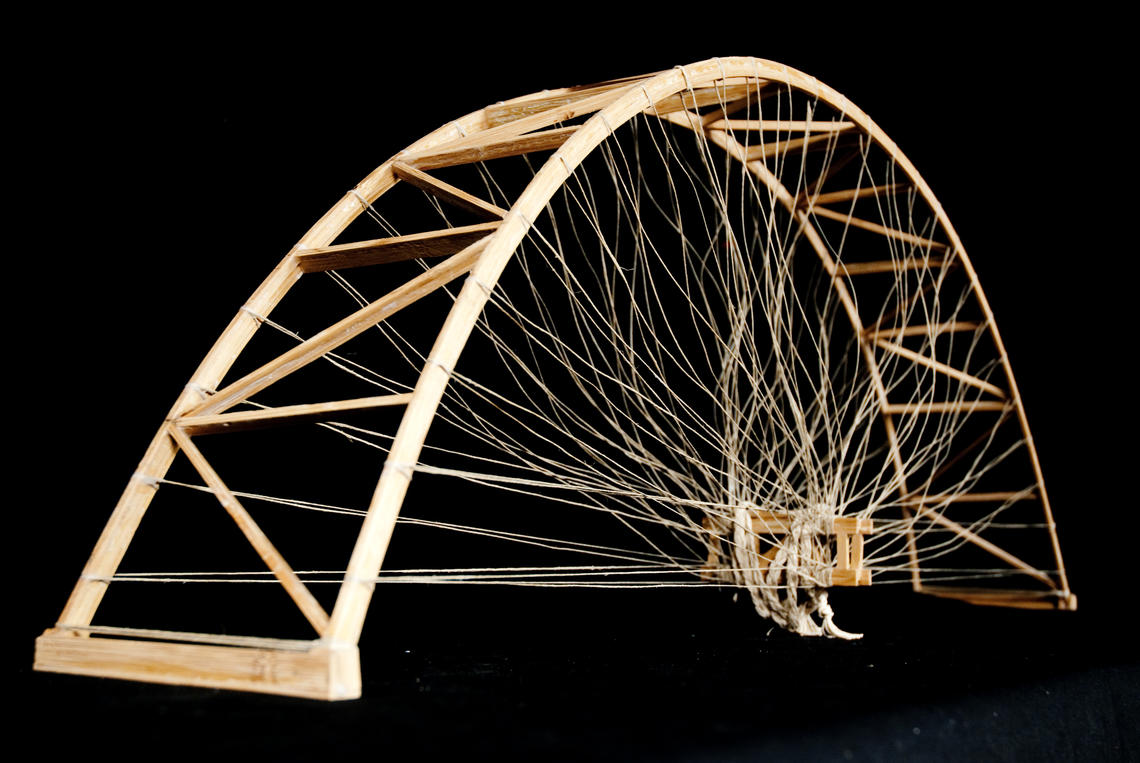
STRUCTURES - Taught by Mauricio Soto-Rubio - M1
This course focuses on the fundamental principles that affect the structural behavior of buildings. Through lectures, exercises and hands on experiments, students will learn analytical techniques for measuring and evaluating the flow of forces through structural systems. They will also begin to appreciate the factors involved in choosing an appropriate structural system for their designs. Students will learn to consider the structural behavior of buildings as a fundamental factor in the design of architectural proposals.

DIFFÉRANCE HOUSE - Brennan Black - Foundation Year - Studio 1 Design Thinking
Différance House is a private residence masquerading as a piece of public art. It is a two-part project, consisting of a residence and a system of screens designed to camouflage and blend the home into the urban landscape. This project borrows its name from Derrida’s concept of différance, the infinite regress of signifiers, which describes the impossibility of language to hold faultless, transcendental meaning. In the same way, this site will produce myriad visual readings and interpretations. This house is designed to accommodate two people with contrasting lifestyles and value systems. It is an exploration of how the boundaries we use to delineate and define ourselves soften and deconstruct when we live in proximity with others.
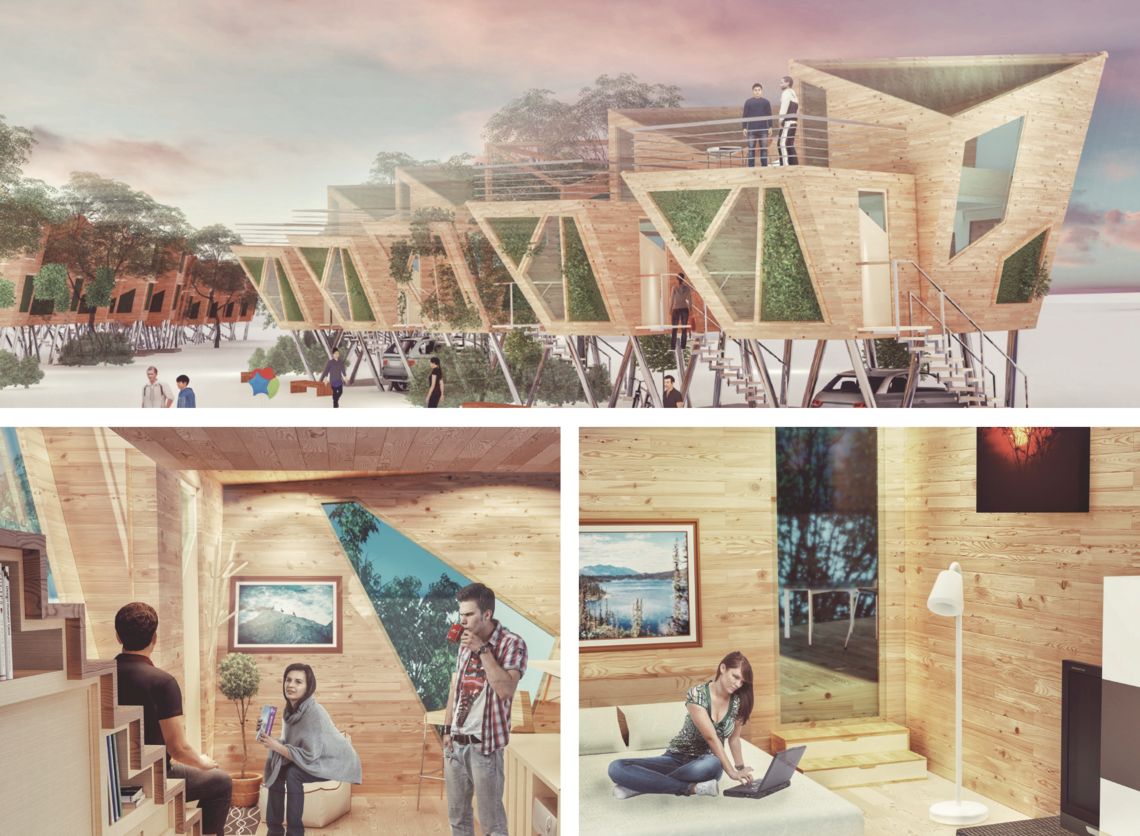
O A HAB – Zhenshi (Dexter) Lu - Foundation Year - Studio 1 Design Thinking
As one of Calgary's most historic neighborhoods, Inglewood is an area in transition located between downtown city and suburban residential zones. With the current cost of living on the rise, there is a demand for low-cost, affordable, and humane housing. This design is based on such consideration, trying to provide more comfortable but affordable housing opportunities for younger generations within minimal spaces, but also striving to transform a passive site with strong industrial context into an organic, active community social place. Through this gradual low impact transformation, the site will eventually be returned to a public urban oasis for leisure time, recreation and social events in the near future, against the rapid expansion of the city.
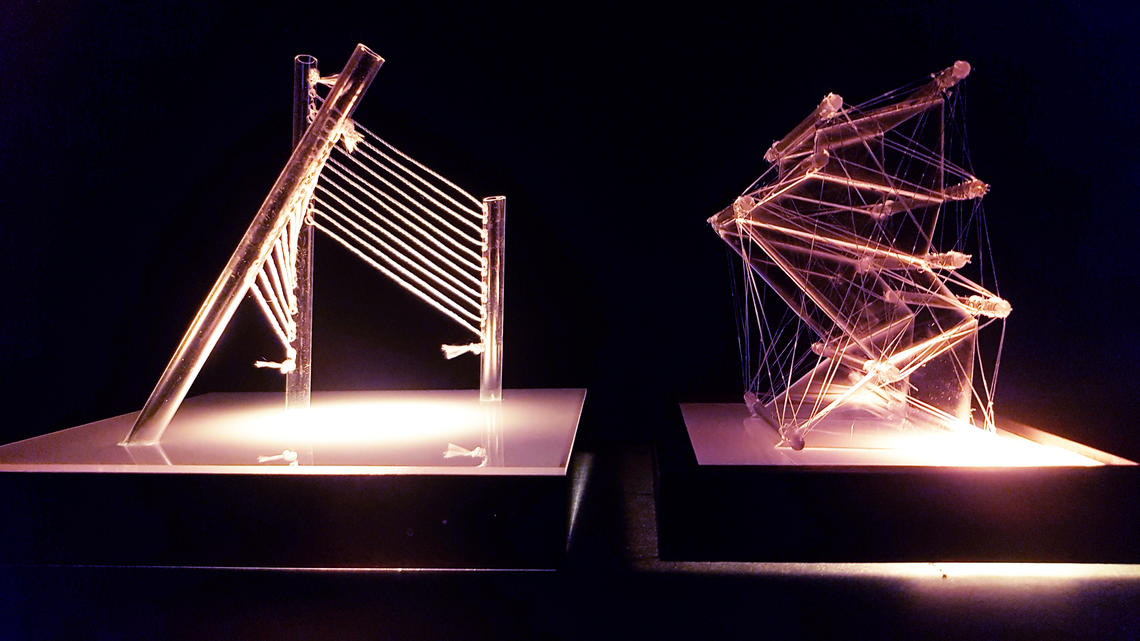
A BUTTERFLYS DREAM - Vikram Johal - Foundation Year - Studio 1 Design Thinking
In today's fast-paced society, it is very easy to get caught up in day to day activities and miss the small moments of magic that surround us. We often get stuck in our habits and don’t think twice about the way we perceive our surroundings. A butterflys dream is designed to play with your perception on a number of levels from both the exterior and interior. Pictured is a detail model as well as an abstracted model of the structure.

HAVE YOU WATERED THE CUBE TODAY? - Catherine Hamel's Studio Section - Foundation Year - Studio 1 Design Thinking
This was a collaborative installation done outside of C-Space in Calgary AB. The driving force was a representation of time and materiality. This was represented using nine, four foot by four foot panels constructed of wood, fabric, and plastic.
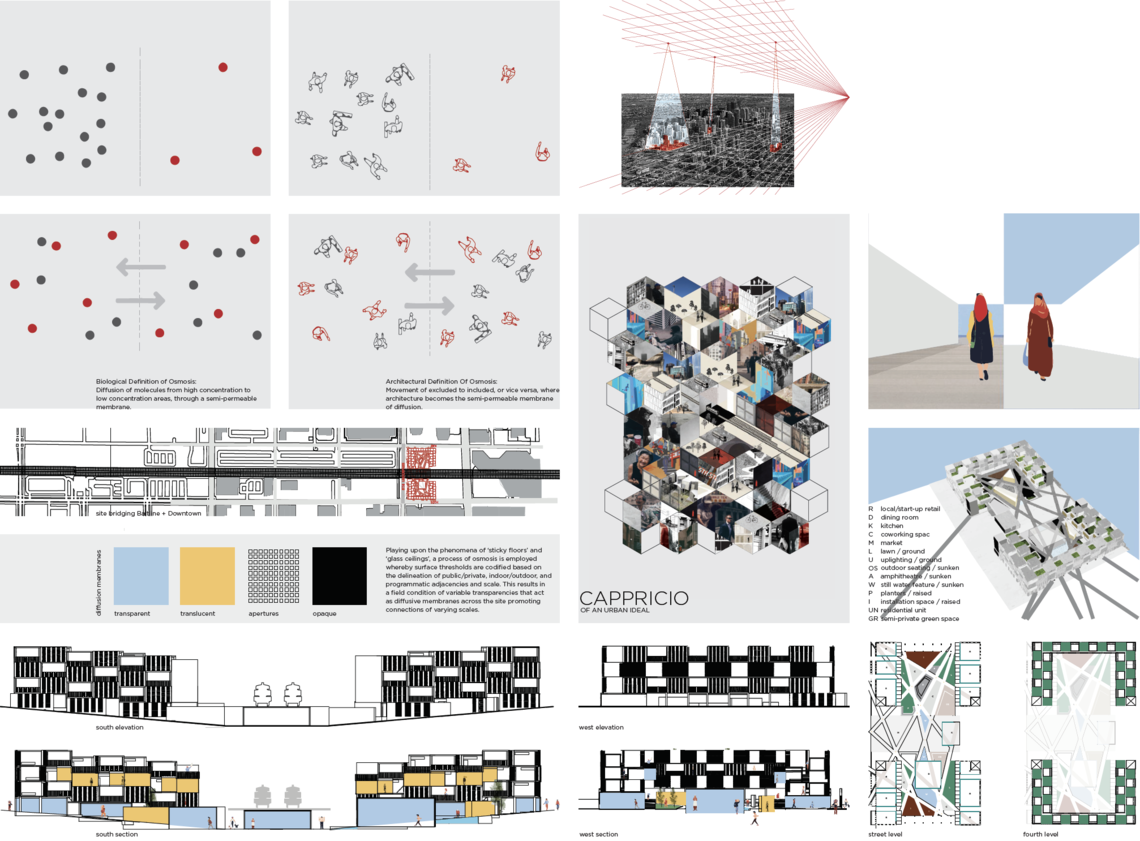
WICKED BORDERS | OSMOSIS IN ARCHITECTURE - Bushra Hashim – M1 – Intermediate Studio
Downtown is one of the only spaces in the city where people of all walks of life converge. But just as this space is the convergence of collective systems, it is also the divergence. Downtown Calgary has the highest concentration of populations most vulnerable to and facing social exclusion. However, divisive barriers are not only immaterially present but also materially amplified within the urban realm, (e.g. the agglomeration of social services in the west end of Downtown) exclusively programming not only the architecture but the urban built from itself. This is an exploration of this wicked problem through the lens of osmosis. Material and immaterial connections are emphasized across the site via the codification of surfaces and dissemination of typical residential programming.
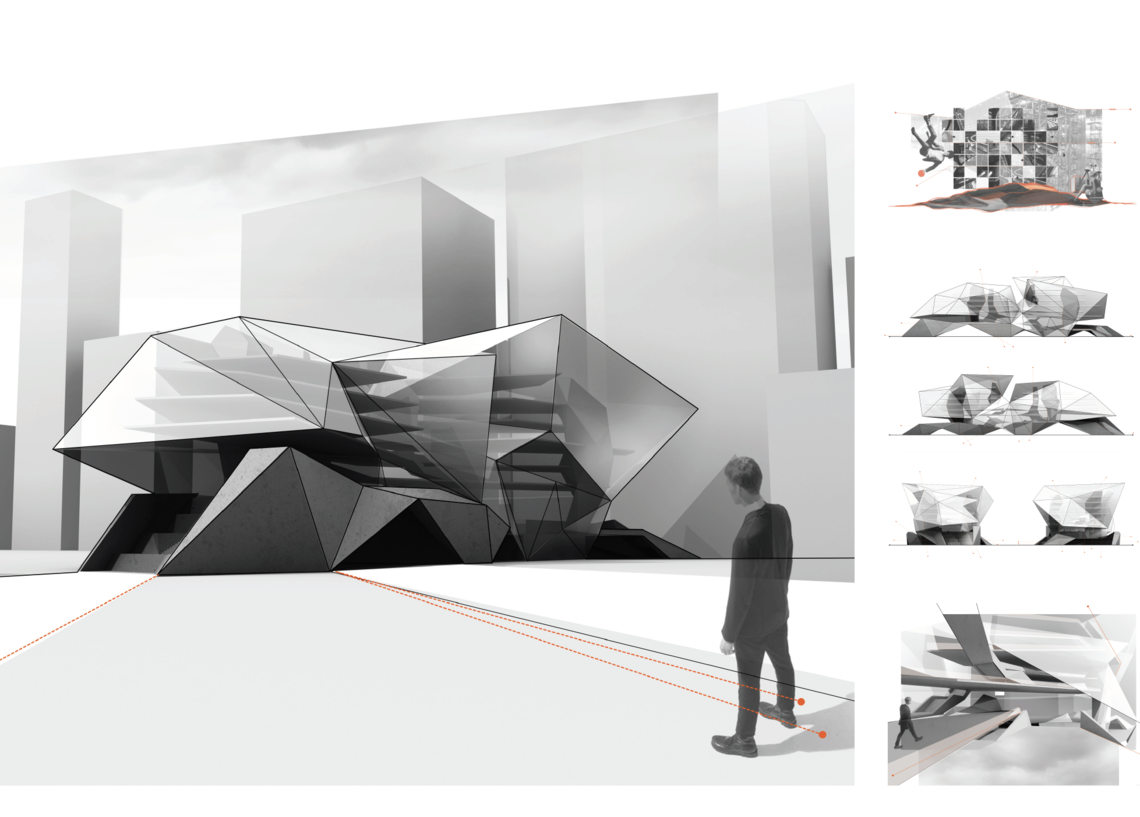
MACHINED CONSUMPTION - Hanna Poulsen – M1 – Intermediate Studio
Machined Consumption is an intervention that allows for the production, consumption, distribution, and commodification of food all in one place. It aims to...
1: Augment the current flows of people, information, goods and services on the site while maintaining the notion of ‘place’.
2: Weave together the current isolated networks present on the site to create meaningful and unexpected spaces of exchange.
3: Anticipate a future condition that arises from the pervasive ‘on demand’ culture in the era of global capitalism.
While being a closed loop food cycle within, the building is tied to the amazon distribution center in Balzac allowing the machine to influence Canada and the rest of the world.
![[ MIXED REALITIES ] [ MIXED REALITIES ]](/sites/default/files/styles/ucws_image_desktop/public/2019-08/3%20-%20Frederick%20Methot%20%20.png?itok=rvRlW8CS)
[ MIXED REALITIES ] – Frederick Methot - M1 – Intermediate Studio
The city offers many points of confliction where different spaces, different personalities and different levels of wellness. Those moments need to be exposed in daylight. The public realms are mostly used by the marginal population, because the first city doesn’t have time to enjoy those space. By revealing those differences, the project is encouraging a didactic vision on the diverse cities. What if those completely private and prize spaces become public and open? The city will open up and start to project a different image of those realities.
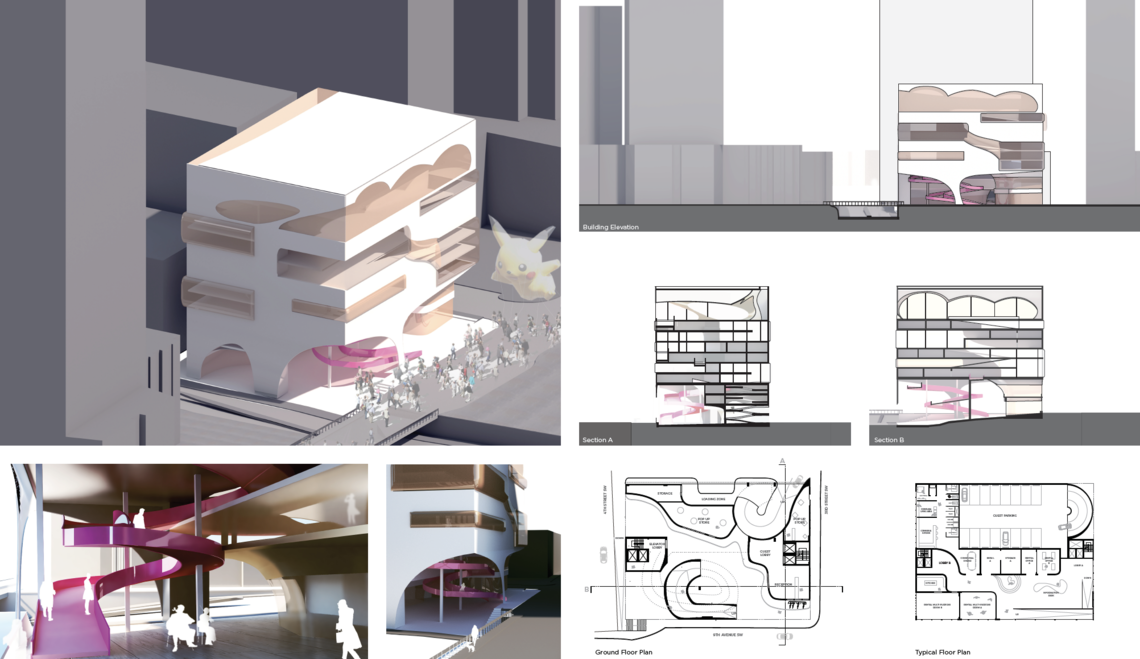
TRIAL SPACE - Rosemary Joseph - M1 – Intermediate Studio
‘Trial Space’ is a hybridized living condition that caters to today’s increasingly globalized world. Cities, such as Calgary, continue to grow. People want to travel to different countries for leisure, education or business. ‘Trial-Space’ is the ideal “hotel” for a new resident of a city. In this case, a resident wanting to experience the way of life in the City of Calgary.
The ideological manifesto behind ‘Trial Space’ is one that contemplates how cities encourage people to move and settle in them, leveraging global city rankings. However, these rankings change or become obsolete with time
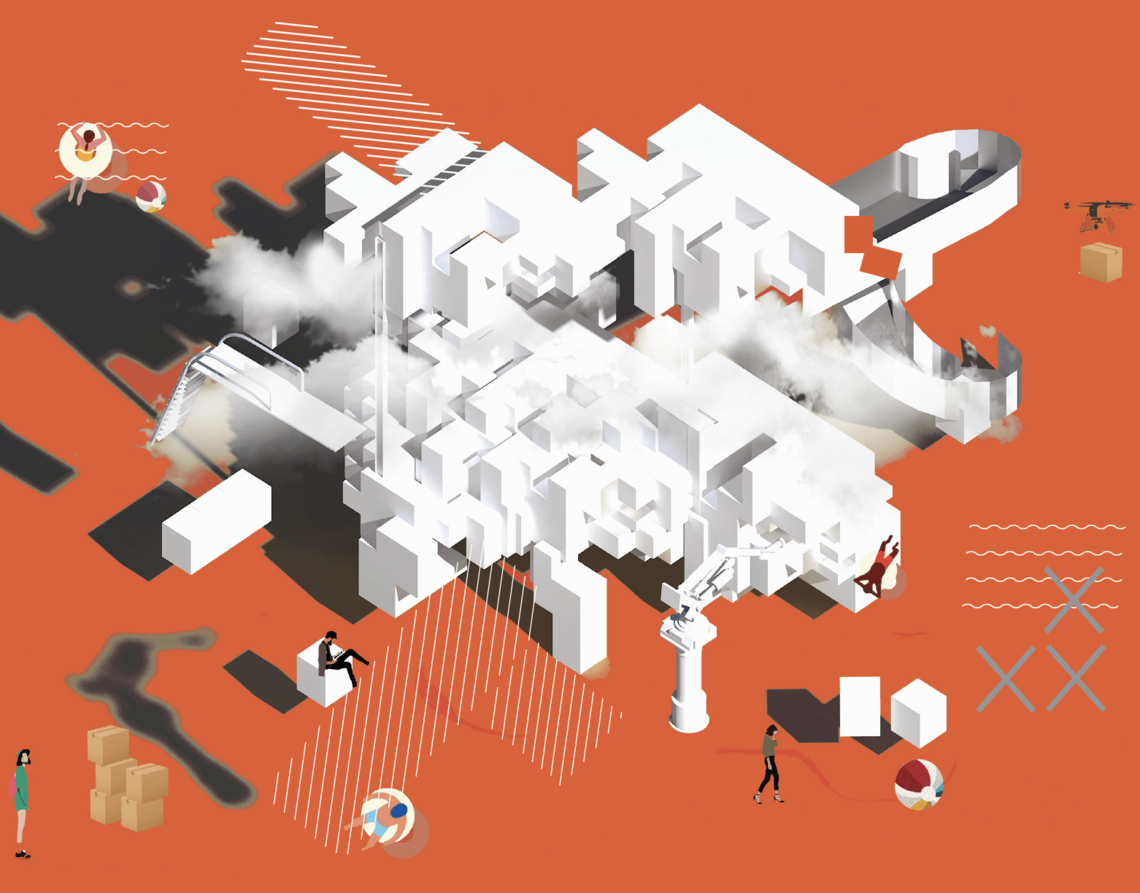
THE PLACE IN WHICH WE’RE SWIMMING - Lauren Fagan - M1 – Intermediate Studio
This project aims to address the unparalleled possibilities of logistical infrastructure. This architecture is a drop of water formed by the pressures of the world, where an operating system determines flow of product, material and users, all of which are driven by capitalism. Between the realm of technology and space, there is no obvious program or master plan. Through coding schemes chemistries unfold, creating moments of indeterminate mass and spontaneous void.
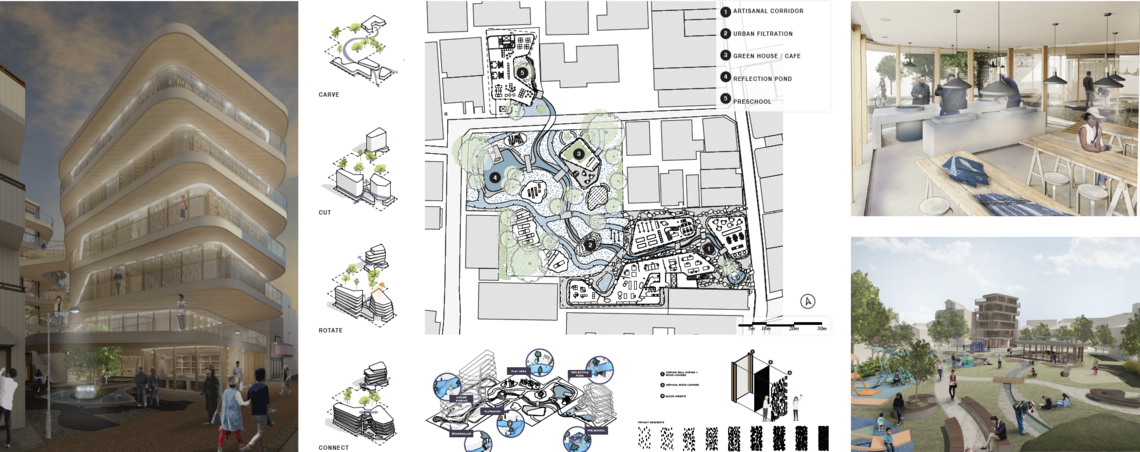
KACHI-IRO - Ashley Ortlieb and Jiffany Wong – M2 – Senior Research Studio (Tokyo)
This project attempts to provide an alternative to Tokyo’s unbalanced live/work life and the toll it takes on the family unit by creating a community that values process, change and environment. An opening up of this rigid and ruled culture is achieved through a symbiotic spatial relationships of living, working, nature, and education. The anchor of the Aizome studio seeks to bridge the modern with tradition, not unlike the bridging over our continuous urban stream.
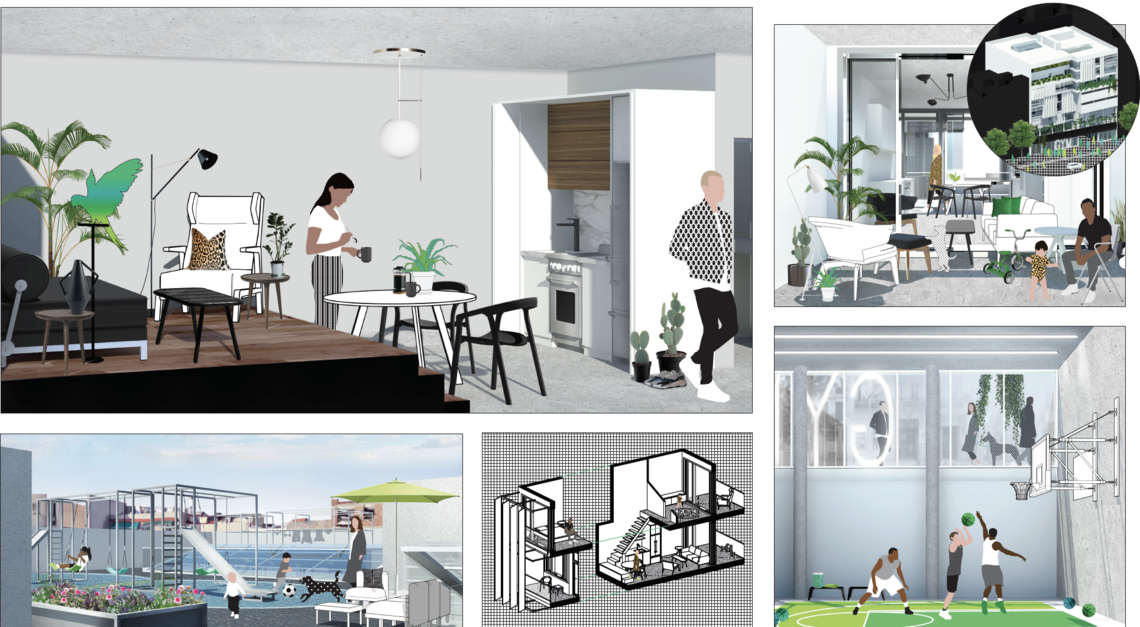
SOMETHING FOR EVERYBODY - Jesse Siegle – M2 – Senior Research Studio (Barcelona)
Something for Everybody is about providing choices for people in where they live. It is about a diversity of people and activities all to be contained in one vessel. This project takes 47 units and creates playful objects out of them, allowing for a diversity of typologies. The combination of these unit typologies creates the spatial patterning that works to cultivate social conditions where there are spaces for engagement and getting to know your neighbour. This playful approach is intended to engage with residents and the community at large. With this whimsical interpretation of a mixed use building, Something for Everybody offers a space to contribute to Barcelona’s diverse and inclusive urban environment.

SANT PAU COOPERATIVE HOUSING - Kelsey Braun - M2 – Senior Research Studio (Barcelona)
The Sant Pau cooperative housing project is a mixed use project organized according to three spatial typologies: public, private, and communal. As a public space, the project provides a new home to the Sant Pau Sports Club, as well as new commercial space and cafe. Additionally, the project features 48 residential units, including a mix of studio, one bedroom, and two bedroom units that are distributed evenly throughout the building to encourage the mixing of socio-economic classes. In addition to the traditional public and private programs, the project introduces communal gathering spaces such as lounges, patios, and shared laundry facilities for residents of the building to interact and develop a sense of community.
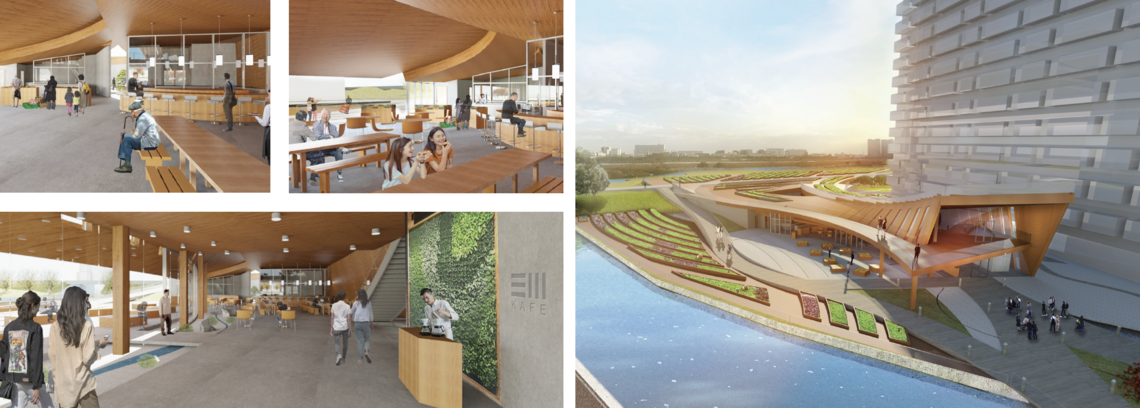
MIKAWA CULTIVATING PLACE IN URBAN SPACE - Melissa Christenson, Jenessa Lasaleta, and Wei Zhang - M2 – Senior Research Studio (Tokyo)
Tokyo, the world’s largest urban centre, is an incredible blur of subtleties and boldness. Despite its density and limited space, its people still find ways to practice place-making and forge community. Tokyoites, on the whole, are resilient and self-sufficient at finding ways to make the city their own. However, not everyone is in a position to be able to exercise ownership over their space. Mikawa’s main clients are the homeless people of Tokyo and the general public. The main driver for the project are support and reintegration services available for the homeless population. A cafe, along with a market and produce garden, are the public and visible components of the project, and provide reliable employment opportunities for the homeless. As the two people groups interact, the goal is to strengthen community, while restoring the dignity of the less fortunate. Mikawa holds out a helping hand, offering support and empowerment in a dignified and sensitive way for those trying to find their place into society.
